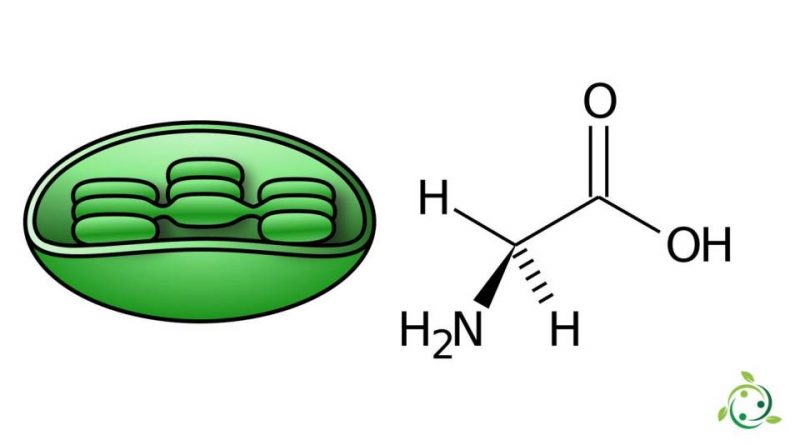Glycine
Glycine
Glycine, whose term in the official IUPAC nomenclature is: aminoethane acid is a non-polar amino acid with a brute or molecular formula: C2H5NO2.
Glycine is the simplest of the 20 ordinary amino acids, its side group is a hydrogen atom. Furthermore, having two hydrogen atoms bonded to the α carbon atom, it is not a chiral molecule.
Glycine, due to its reduced steric bulk of the lateral group, can fit into many spaces where other amino acids cannot. For example, only glycine can be the internal amino acid of a collagen helix.
Most proteins are made up of small amounts of glycine. A notable exception is collagen, of which it makes up about a third.
In plants, glycine is the main amino acid with a complexing action. It is essential for the enhancement of photosynthetic activity and chlorophyll content.
At the human level, glycine is not essential for the diet, as it is biosynthesized in the body by the amino acid serine, in turn derived from 3-phosphoglycerate, but the metabolic capacity for the biosynthesis of glycine does not satisfy the need for collagen synthesis .
In most organisms, the serine hydroxymethyltransferase enzyme catalyzes this transformation via the pyridoxalphosphate cofactor:
serine + tetrahydrofolate → glycine + N5, N10-Methylene tetrahydrofolate + H2O
In the liver of vertebrates, glycine synthesis is catalyzed by glycine synthase (also called glycine-splitting enzyme). This conversion is easily reversible:
CO2 + NH + 4 + N5, N10-Methylene tetrahydrofolate + NADH + H + ⇌ Glycine + tetrahydrofolate + NAD +
In addition to being synthesized from serine, glycine can also be derived from threonine, choline or hydroxyproline through the inter-organ metabolism of the liver and kidneys.
At the metabolic level, glycine is an inhibitory neurotransmitter in the central nervous system, especially in the spinal cord and brain stem, where it is crucial for the regulation of motor neurons. Furthermore, glycinergic interneurons have been found in the retina, the auditory system and other areas involved in sensing. Like GABA, glycine is coupled to the modulation of intracellular chlorine ions.
Furthermore, glycine, among its various functions, is capable of attenuating the glycemic response if ingested with glucose. If glycine and glucose are taken together, the plasma glucose response is attenuated by approximately 50% compared to the response given by the intake of glucose alone. Among various protein sources, glycine is highly present in gelatin, making up about 30% of the amino acids it contains.
Warning: The information shown is not medical advice and may not be accurate. The contents are for illustrative purposes only and do not replace medical advice.

